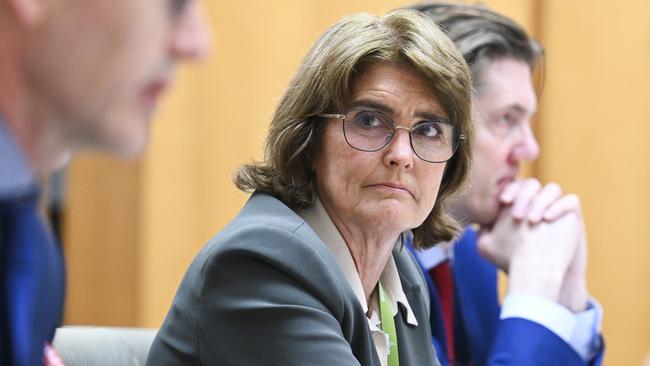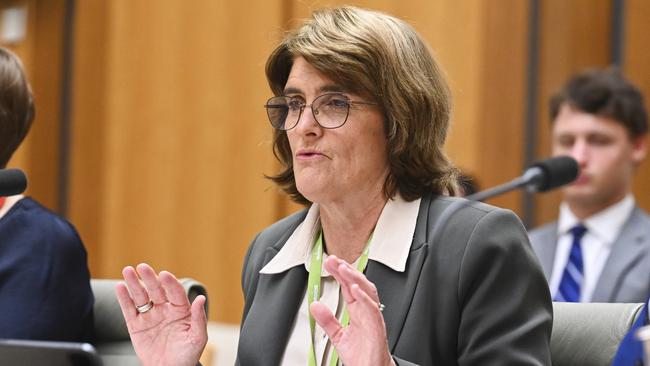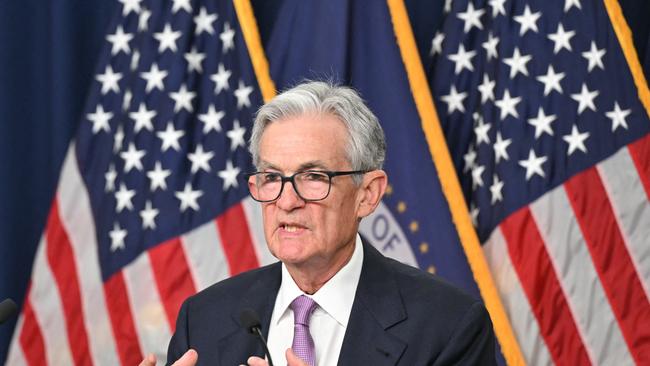Hawkish RBA won’t buckle – economists lean toward even later rate cuts
Amid rising political pressure on the RBA to cut interest rates, there’s actually a growing risk that domestic monetary policy will be on hold for longer than currently expected.

Amid rising political pressure on the Reserve Bank to cut interest rates, there’s actually a growing risk that domestic monetary policy will be on hold for longer than currently expected, economists say.
Bloomberg’s latest survey of economists showed most still expect the RBA will start easing by cutting its cash rate target 25 basis points to 4.10 per cent in the March quarter before cutting again in the June and September quarters of 2025. No economists surveyed expect any further rate hikes.
Only Commonwealth Bank and a couple of other forecasters still expect the RBA to cut rates before year end.
But even though the Fed kicked off its rate cutting cycle with a jumbo-sized rate cut of 50 basis points last week, the money market is notably less confident that the RBA will cut rates by year end.
The market-implied chance of the RBA cutting rates by year end fell from around 100 to 68 per cent in the past month. US rate cuts may promote Aussie dollar strength which could slow the economy, but at this stage the potential need for the RBA to cut rates because of weakening global and economic growth has lessened. The US recession narrative that emerged two months ago has been turned on its head and Australia’s jobs market stayed strong despite record workforce participation.
Meanwhile there’s been nothing to convince the RBA that underlying inflation will come back inside the target band any sooner than the current forecast of December 2025, a time frame that’s already testing the tolerance of the RBA board.
It comes after the Greens Party made an outlandish call on the Federal Treasurer to force the RBA to cut rates in return for the minor party supporting legislation to reform the central bank.
But HSBC chief economist Paul Bloxham says the RBA will hold the cash rate steady at a 12-year high of 4.35 per cent on Tuesday and then “spend a lot of time” explaining why Australia and the central bank’s position is different to the US and many other countries.
After what’s expected to be another relatively hawkish statement, RBA governor Michele Bullock will be explaining why the RBA can set its own policy, is independent and why the economy is in a different spot to others, Mr Bloxham said.

The RBA is widely expected to consider only a hike or a hold at this meeting. That has been the case for the past few months. Any consideration of a cut would be taken as a dovish signal.
Mr Bloxham says four key factors are weighing on the RBA’s decisions – it lifted rates by less than most other central banks; second, last year’s surge in inward migration added a bit to inflation; third, fiscal settings have become more expansionary; finally, productivity has been “woeful”.
“By virtue of the factors above, particularly the RBA’s chosen strategy, an extended period of weak demand is likely to be needed to dis-inflate back to the RBA’s 2-3 per cent target band,” he said.
Reflecting a growing view that RBA rate cuts could be delayed beyond the expected start of February, Mr Bloxham also saw a possibility that the RBA could “miss the easing phase altogether.”
“Our central case is that cuts do not begin until the June quarter but there is some risk that it could take even longer than that,” he said.
“This raises another plausible risk that perhaps by the time the RBA is in a position to consider cutting, the global backdrop has changed, global reinflation is underway and the RBA chooses, even then, not to cut.”
Of course for this to happen, a fairly quick turnaround in the global cycle, with a reflationary upswing would probably be needed. On that score, the fact that the Fed cut by 50 basis points may indicate a desire to pivot quickly to support growth, now that US inflation has fallen sufficiently.
“It may be that US rate cuts are somewhat front-loaded, which could, in principle, see a faster reinflation and growth turnaround,” Mr Bloxham added.
While FOMC officials have projected just 75 basis points of US rate cuts this year and 100 basis points next year, the market has priced in 180 basis points of cuts by July 2025.
So perhaps by mid-2025 the Fed will have delivered enough stimulus, just as the RBA thinks it could consider it, but global reflation steers the RBA away from cutting rates.

Mr Bloxham says domestic inflation might fall enough to lift consumer spending without the need for rate cuts. In that case the RBA may look like the “steady hand” that hiked rates just enough to eventually control inflation while other central banks hiked more, then cut by more and potentially made the amplitude of the cycle larger than it might have otherwise been.
A less positive scenario would be where domestic inflation stayed sticky and elevated.
“Perhaps it stays around 3.5 per cent, rather than 2.5 per cent,” Mr Bloxham said.
“If this forced a nearer term rate rise it could be particularly challenging, especially if that drove the economy into a recession.
“It would also be particularly problematic if the higher inflation embedded itself in inflation expectations.”
Wednesday’s August inflation data will be the first print that starts to show the impact of the government’s cost of living, electricity bill subsidies.
HSBC is expecting headline CPI to fall from 3.5 per cent in July to 2.7 per cent year-on-year, but the trimmed mean – a focus for the RBA – may fall by far less, from 3.8 per cent to 3.5 per cent.
More Coverage
Originally published as Hawkish RBA won’t buckle – economists lean toward even later rate cuts





